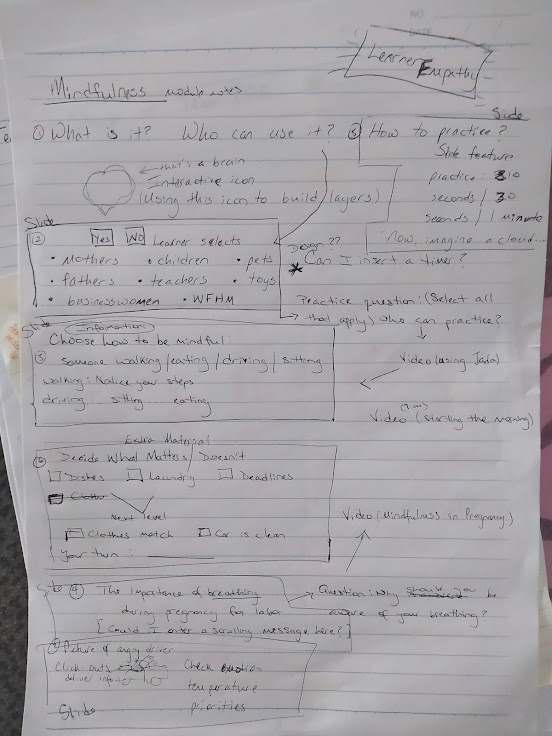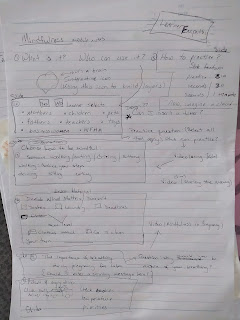Topic: Mindfulness Target audience: Everyone? Can I focus on people who self-identify as overwhelmed with life and managing the several areas it involves? Mothers How to gather data? Informal survey through messaging. Poll people I know about their perspective of mindfulness. Question: How do you define/understand "mindfulness"? Design Methods Persona Because we naturally relate to other people People typically share similar interests and lifestyles that influence their attraction to a product Without a persona, designers/design team make assumptions or design for themselves - Problematic! Gives a target to focus on User journey mapping Visualize the steps a user will take to accomplish a goal 1st: Whose journey is it? Using the data collected about users' characteristics, what do I want them to accomplish? 2nd: Plot the stages of the experience using a timeline Identify the 6 aspects: Stages, Activities, Thoughts and Emotions, Touchpoints, Pains, Gains... as well as th...



